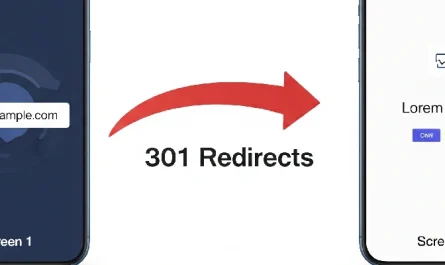Introduction
Search isn’t just ten blue links anymore; it’s answers. That shift is why GEO for B2B agencies has become mission-critical. Generative engines (Google AI Overviews, Chat-style results, enterprise copilots) summarize the web and sometimes sidestep clicks. If your brand isn’t named or cited in those answers, you’re invisible—even when you “rank.”
Why this topic matters right now
Fresh studies show AI summaries reduce link clicks. Pew found users clicked traditional results in just 8% of visits when an AI summary appeared, compared with 15% without one. Pew Research Center Seer Interactive’s longitudinal analysis reports -61% organic CTR on informational queries with AI Overviews, with paid CTRs also down. Translation: less click share even when you show. Seer Interactive+1
Meanwhile, Google’s own guidance acknowledges new AI features (AI Overviews, AI Mode) and tells site owners how inclusion works—useful, people-first content with clear sources and structured data still matter, but the surface has changed. Google for Developers And the term “Generative Engine Optimization” is no fad—trade press and early research are formalizing GEO tactics distinct from classic SEO. Search Engine Land+2arXiv+2
For B2B specifically, buyer behavior is shifting: 89% of B2B buyers report using gen-AI as a top self-serve source across the journey. If your brand isn’t the one these engines surface, your pipeline shrinks. Forrester
Quick primer: What GEO is (and isn’t)
GEO is optimizing your content and evidence so answer engines can confidently quote, cite, and recommend you—across AI Overviews, chat answers, copilots, and RAG systems. It’s not keyword stuffing for bots. It blends classic SEO signals with machine-readable proofs, entity clarity, and response-friendly packaging. Search Engine Land+1
Playbook: How B2B agencies operationalize GEO
1) Engineer for answers, not just rankings
- Write the answer first. Lead with the direct, precise answer in 1–2 sentences, then expand with steps, data, and examples.
- Mark up sources. Use schema (FAQ, HowTo, Product/Service, Org, Person) and cite primary data to raise extractability and trust. Google’s AI features documentation emphasizes usefulness, E-E-A-T, and structured signals. Google for Developers
- Name the entities. Clarify company names, products, industries, and synonyms so LLMs map you correctly to the query’s entities.
2) Create “RAG-ready” assets
Copilots and answer engines love clean, citable artifacts: PDFs with clear abstracts, method notes, and charts; glossary pages; API pages; implementation guides; case studies with measurable outcomes. Publish verifiable numbers and stepwise procedures; link to sources. (These outperform fluffy thought-leadership in AI answers.) Google for Developers
3) Design for mention-worthiness
- Original data > opinions. Quarterly studies, benchmarks, or teardown series get cited more often in AI Overviews and media. SEJ’s recent analysis shows AI Overviews appear most on informational/question queries—exactly where your research can win you a mention. Search Engine Journal
- Distinctive naming. Coin and consistently use framework names (e.g., “5-Signal ICP Fit”), so engines latch onto a unique entity, not a generic phrase.
- Evidence formatting. Use bold claim → proof table → link to method. It’s skimmable for humans and reliably extractable for models.
4) Optimize layouts for “snippet-to-summary” lifts
- TL;DR blocks at the top (one-paragraph executive answers).
- FAQs targeting question intent clusters (what/why/how/cost/risks).
- Alt text and captions that restate the answer succinctly (models parse these).
- Cite cadence: one outbound primary source per major claim to boost credibility signals. (Pew, Seer, McKinsey, Google docs are B2B-safe staples.) Google for Developers+3Pew Research Center+3Seer Interactive+3
5) GEO-aware measurement
Clicks drop; mentions matter. Track:
- AIO presence rate (how often your target queries surface AI Overviews).
- Brand mentions inside summaries (manual sampling + LLM-based parsing).
- Cited link share (of the few links under summaries, how often are you one?).
- Assisted conversions from geo-influenced content (matched-market tests, view-through).
SEMrush projects AI-search visitors could overtake classic search by 2028—get your baseline now. Semrush
6) Media mix adjustments for the AIO era
With CTRs compressed, shift some budget to brand queries (protect your name) and retargeting pools triggered by geo-optimized assets. Keep SEO fundamentals: Google’s starter guide hasn’t gone out the window—CWs, internal links, and crawlability still drive inclusion. Google for Developers
GEO content architecture for B2B sites
Answer Hubs (per solution or ICP):
- Executive summary (2–3 sentences that directly answer the core question).
- Implementation steps with diagrams.
- Cost/ROI calculators (models love structured numbers).
- Compliance & risk FAQs.
- Case evidence with metrics and methods.
Signal Pages: Short, high-clarity definitions of your category, methodology, and acronyms—each cross-linked.
Data Posts: Quarterly or semiannual benchmarks that earn citations (and feed AI answers).
Customer Story Library: “Outcome-first” abstracts (e.g., “-28% CAC in 90 days”).
Governance Note: Bylines, update dates, and source lists on every asset—explicit trust signals influence inclusion in AI features. Google for Developers
Tooling checklist (lightweight, practical)
- Structured data validator for schema health.
- Entity audits (does your org appear correctly in Wikidata/LinkedIn/Crunchbase/GS?—helps disambiguation).
- AIO monitor (track AI Overview appearance for your query set + whether you’re cited).
- Prompt QA (ask leading answer engines your ICP’s top 25 questions monthly; log citations).
- Analytics view for assisted conversions + brand search trends (since CTR alone is noisy in AIO contexts). Seer Interactive+1
GEO + SEO: invest in both, with different goals
Search Engine Land’s take is blunt: GEO is rising, but SEO remains essential. Use SEO to keep your technical house in order and maximize indexable authority; use GEO to win the summary and be named in the conversation. Do both, deliberately. Search Engine Land
Choosing the right partners
If you want a team that can turn strategy into answer-ready assets, partner with an integrated marketing agency that connects research, content ops, and media. And if you want a national creative engine that can package proprietary data stories people share (and engines cite), team with a creative agency in India that builds distinctive assets and repeatable formats.
Conclusion
Answer engines reward clarity, proof, and distinctiveness. If you build RAG-ready research, package precise answers, and measure mentions—not just clicks—GEO for B2B agencies turns AI summaries into real pipeline. The prize isn’t position; it’s presence.
Does this interest you? Connect with us to see how we can help you!
10 FAQs
What is GEO for B2B agencies?
Optimizing content so generative engines cite and recommend you in AI answers across search and copilots. Search Engine Land+1
Is traditional SEO dead?
No. Technical SEO and content quality remain foundational; GEO layers answer-readiness on top. Google for Developers
How do I know if AI Overviews are hurting clicks?
Watch AIO presence rates and compare CTR when summaries appear vs. when they don’t; multiple studies show meaningful declines. Seer Interactive+1
What formats get cited most?
Original data studies, clear how-tos, checklists, glossaries, and case abstracts with metrics.
How often should we publish “data posts”?
Quarterly is ideal; align with product releases or seasonal demand to increase pickup.
Which schema types help GEO?
FAQ, HowTo, Product/Service, Organization, Person, Breadcrumb—use where relevant. Google for Developers
What KPIs should I report to leadership?
Mentions in AI summaries, cited link share, brand search volume, assisted conversions, and pipeline/revenue influenced.
Where do B2B buyers actually use gen-AI?
Across the journey—problem framing, vendor shortlists, and due diligence, per Forrester’s 2024 buyer data. Forrester
What’s one fast win this quarter?
Publish a “TL;DR + steps + data” Answer Hub for your #1 solution page and add FAQ schema.
How does GEO affect paid media?
Lower CTRs mean you should protect brand queries, shift some budget to remarketing, and use GEO content to warm audiences before they search. Seer Interactive
Some of the services that Clevertize provides are:
Creative Services, Performance & Digital Media Marketing, Visual Identity & Branding, Campaign Management & Analysis, UI/UX & Website design, Video creation, Media planning & buying, Chatbot & more.
If Return on Investment is critical for you, talk to Clevertize!
Reach out to us at saumya@clevertize.com!





